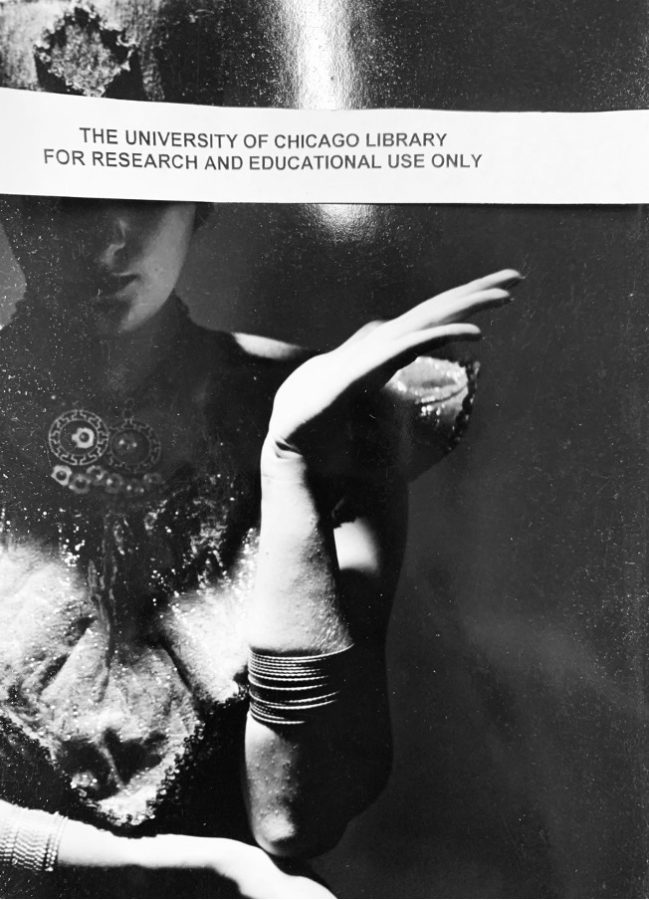I recently went on my first visit to the Special Collections Research Center on the first floor of the Reg. I was there to see a box of photographs and two dresses from the Marjorie Whitney Prass Collection. Marjorie Prass was a student at the University of Chicago in the late 1930s, and the dress I viewed was worn in a performance during her undergraduate studies. Although the purpose of my visit was to do research for my Women of the Avant-Garde class, what I gained from the experience has the potential to impact all of my future classes and my overall experience in the College.
The minute we enrolled at the University of Chicago, we were granted access to an immense amount of resources. I have come to realize that many of my peers have not taken advantage of what is right in front of them. Students in all fields of study should spend more time engaging with UChicago’s physical and digitized archive, particularly with the parts that pertain to the University itself.
While observing an object from the past, you begin to look at it through the lens of the systems through which it was created. When I viewed Prass’s dress in the flesh, I was able to see each and every stitch that was used to bring the entire dress together. This allowed me to recognize its humanity, something that no photograph will ever be able to accomplish. The majority of our coursework is angled from a contemporary lens; thus, occasionally orienting ourselves in the time of creation gives that time period more meaning. We have become so accustomed to thinking about UChicago as it is in the present that we overlook the history welded into the gates at the entrance of the quad or chiseled into the spires of Saieh Hall. Recognizing and accessing this history through the easily accessible photographic archive will make us more attuned to and grateful for our present moment.
When we view the archive, there is no way to be wrong, which can serve as a reminder that our individual viewpoints matter—something that becomes especially important to recognize at a school with the rigor of UChicago. In the archive, the perspective of the novice researcher becomes just as—if not more—significant than the interpretation of someone who visits it every day. There is no systematized way to engage with the archive, no major for archival studies or certificate to prove one’s skills. The archive can help ground all other aspects of study, serving as encouragement after doing poorly on a midterm or alleviating writer’s block for an upcoming paper. It has shown me that when we get caught up in the present impact of things, it sometimes takes one step back (in time) to move two steps forward.
Our education has quickly become intangible, causing many simple tasks like performing labs or even attending lectures to lose meaning and feel as if they were a chore. By holding or observing a piece of the past, these tasks can be made much more intimate and gratifying. For example, my first lab report in physics this quarter was to use an online simulation to replicate the Millikan oil drop experiment and measure the charge of an electron. At first, I found myself overwhelmed, confused, and even disillusioned. Then I realized that using UChicago’s photographic archive to view photographs of the building where the experiment originally took place—the Ryerson Physical Laboratory—grounded me much more than I thought a photograph could be capable of. The experiment had almost seemed impossible; by situating myself in the location of the experiment in the same decade the experiment was done, I was able to share its history and make it my present.
Besides the revelations that the archive provides, visiting it is fun! It’s satisfying to touch the velvet folds of a dress worn for a stage production in the 1940s (Box 23 of the Marjorie Whitney Prass Collection) or see how fat an Oreo Big Stuf is (Box 679 of the R.R. Donnelley & Sons Company Archive). The Special Collections Research Center is like an easily accessible museum, tailored to your own preferences, that replaces the do not touch signs with please touch signs (while still following the precautions and guidelines, of course).
Maya Ordonez is a second-year in the College.








